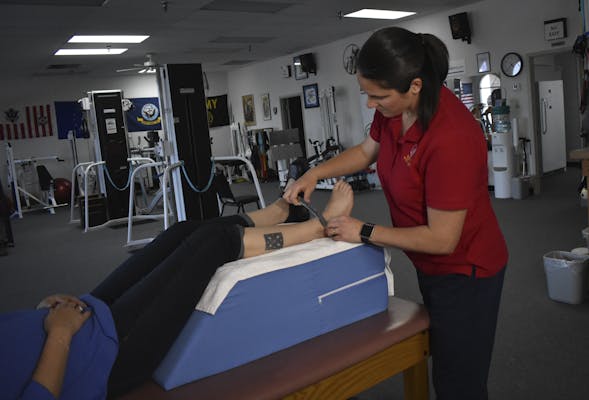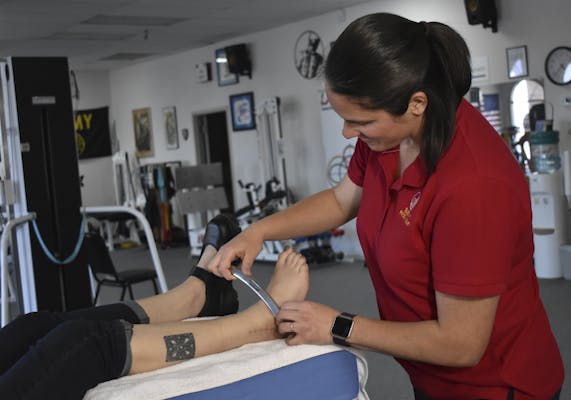One of the latest techniques being used by physical therapy services is the Graston Technique. Physical therapists must receive several hours of special training and become licensed to practice this innovative treatment method. People who suffer from chronic pain and stiffness are finding the treatment method extremely effective at helping them to manage their discomfort. The technique uses manual manipulation of the musculoskeletal system with several small, handheld tools to provide relief.
Basic elements of the Graston Technique
A physical therapist who specializes in the Graston Technique has been trained in the use of six specific tools that are patented for use with the treatment. The tools are used to move soft tissues throughout the body. Each tool has a specific purpose and works to free the body of any restrictions within the fascia that lead to stiffness, inflammation and chronic pain. In order for a physical therapist to be able to use the patented tools associated with the Graston Technique, they must be trained and complete a licensing program that verifies they understand how each implement is designed to work.
A Graston treatment includes a warm up period. This normally involves a few minutes of intense physical activity or stretching to warm up the tissues. When you're ready, the physical therapist will use the appropriate tools to mobilize the tissues and remove any restrictions. As the treatment session ends, flexibility is increased and strength-building exercises are used to slowly cool the tissues down. Ice packs are applied as necessary.
Are instruments or tools used during a Graston Technique treatment?
Six stainless steel tools are used to perform the Graston Technique. The handheld implements are uniquely shaped and designed to serve a purpose during the treatment. Each has unique angles and edges that are used on various areas of the body to elicit a healing response. The tools help the therapist identify problem areas by the texture of the tissues. Once the areas have been identified, the tools are then used to move the tissues, releasing tension and stiffness that can localize in the fascia. Moving the edges of the tools across the tissue breaks up scar tissue and relaxes the surrounding tissues.
What conditions respond well to the Graston Technique?
People use physical therapy to relieve chronic pain, inflammation, and stiffness that often result from tightness and restrictions that affect the fascia. Restrictions and blockages are often associated with the buildup of scar tissue and damage caused by injuries that weren't allowed to heal properly. The list of conditions that can benefit from the Graston Technique is extensive. A few of the most well known include:
- Tendonitis
- Damage to the Achilles' tendon
- Tennis elbow
- Plantar fasciitis
- Knee injuries
- IT band syndrome
- Scarring from Cesarean sections
- Mastectomy scarring
- Rotator cuff injuries
- Shin splints
- Neck and cervical pain
- Scarring and injuries related to joint replacement surgeries
- Carpal/cubital tunnel
- Fibromyalgia
The Graston Technique softens the fascia and breaks up deposits that can sometimes build up during the healing process. Its ability to effectively dissolve scar tissue can release tension throughout the entire area reducing pain and inflammation that can reduce flexibility and limit your range of motion.
If you're looking for physical therapy services that include the use of the Graston Technique, contact us at Kenner, LA Center and make an appointment today. There are licensed physical therapists available that can provide you with the treatment you need to be free of chronic pain and inflammation.





